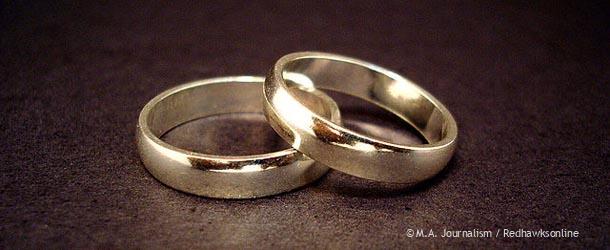Minnesota’s proposed marriage amendment sparks heated debates; analysis of votes shows demographic splits
There it was on your ballot. Minnesota Amendment number one: “Shall the Minnesota Constitution be amended to provide that only a union of one man and one woman shall be valid or recognized as marriage in Minnesota?” The topic that divided religious groups, political parties, even friends. Overall the amendment to define marriage as between one man and one woman didn’t pass, making the Minnesota the first state out of 33 to vote against a marriage bill. But one question still stands, who voted what?
When the Star Tribune conducted a sample survey just before the election with 800 participants, the results showed that a majority 48 percent planned on voting yes on the amendment, followed 47 percent voting no and 5 percent still undecided. However, there were more questions answered than just how one was planning to vote.
Among genders, 54 percent of males and 43 percent of females planned on voting yes. This left 41 percent of males voting no, 52 percent of women, with 5 percent undecided for both. But did the results line up with this sample? CBS news exit polls show that along gender lines, they did. CBS’ results show that 53 percent of men voted yes, and 47 percent voted no. This matched the Star Tribune’s results.
When the Star Tribune asked likely voters how much of an impact their religious leaders would have on their vote, 17 percent said it had a major impact, 27 percent claimed it had some impact, 15 percent stated had not much impact, 37 percent said it had no impact at all, and 4 percent were unsure on how their religious leader would affect their vote.
Out of the 44 percent who said that it had a major or some impact on their vote, 70 percent planned on voting yes, 27 percent voting no, and 3 percent left undecided. Out of those who said that it’d have not much or no impact at all, 26 percent planned voting on yes, 67 no, and 7 percent undecided.
“I think that so many of the people who really struggle with this issue struggle with it because of their faith beliefs,” said Javen Swanson, faith organizer for OutFront Minnesota, an interest group that co-founded Minnesotans United for All Families, an organization opposing the amendment. “I certainly think that both organizations in campaigning for the amendment knew that talking about faith is really critical.”
“I think faith was a very big factor for many people,” said Autumn M. Leva, spokesperson for Minnesota for Marriage, an interest group that campaigned for the amendment. Specifically, Leva cited exit polling from Fox News that among voters who attend religious services regularly (once per week), 65 percent voted yes, while 35 percent voted no. Only 25 percent of voters reported attending weekly religious services, however
Leva added that the Fox News polling showed strong support for the amendment among Christians who identified themselves as evangelical or born-again (24 percent of all voters polled), with 77 percent voting for the amendment.
Some individuals opposed their religious leaders’ stance on the amendment. Specifically, after the Catholic church went public with their support of the amendment, they met considerable backlash. The Catholics for Marriage Equality group created a Minnesota branch, and signs proclaiming “Another Catholic Voting No” began popping up on people’s lawns.
This was the topic of heated debates for months, even amongst students. Senior Luke Brown was unable to vote in this year’s election, but said that he would have voted for it.
“The government shouldn’t have the power to redefine a word that has been around before the government even existed,” Brown said. When asked if there was also a religious reasoning behind this opinion, he stated that, “With my Christian views, I believe that God created marriage as a union between one man and one woman, and I don’t think the government has the power to redefine that. I don’t think the government is greater than God.”
On the other hand, senior Thomas Gedion was able to vote this year and voted against the amendment.
“I believe that gay marriage should be legal and should be recognized as a legitimate marriage,” he said.
Gedion said his opinion wasn’t determined by religious faith.
“I only saw it as an issue about equality,” he said.
There were also teacher-led discussions, such as in Jeffrey Crafton’s Honors Ethics class, which briefly touched on the subject while discussing sexual morality in general. The marriage amendment and gay rights briefly came up, “just in the sense that we need to separate moral questions of what’s right for us to do in our individual lives from social and political questions of what the law should be,” Crafton stated. “For example, I might believe a particular thing is wrong, but I wouldn’t want to impose that belief on everybody by law.”
With the amendment turned down, the Minnesota constitution remains unchanged. This doesn’t mean that same-sex marriage is now legal in Minnesota. For that to happen a new law would need to be passed. Meanwhile, on Dec. 7, the U.S. Supreme Court agreed to hear two cases on same-sex marriage. Their ruling, expected by May or June of 2013, may decide the constitutionality of any state laws regarding the issue.

